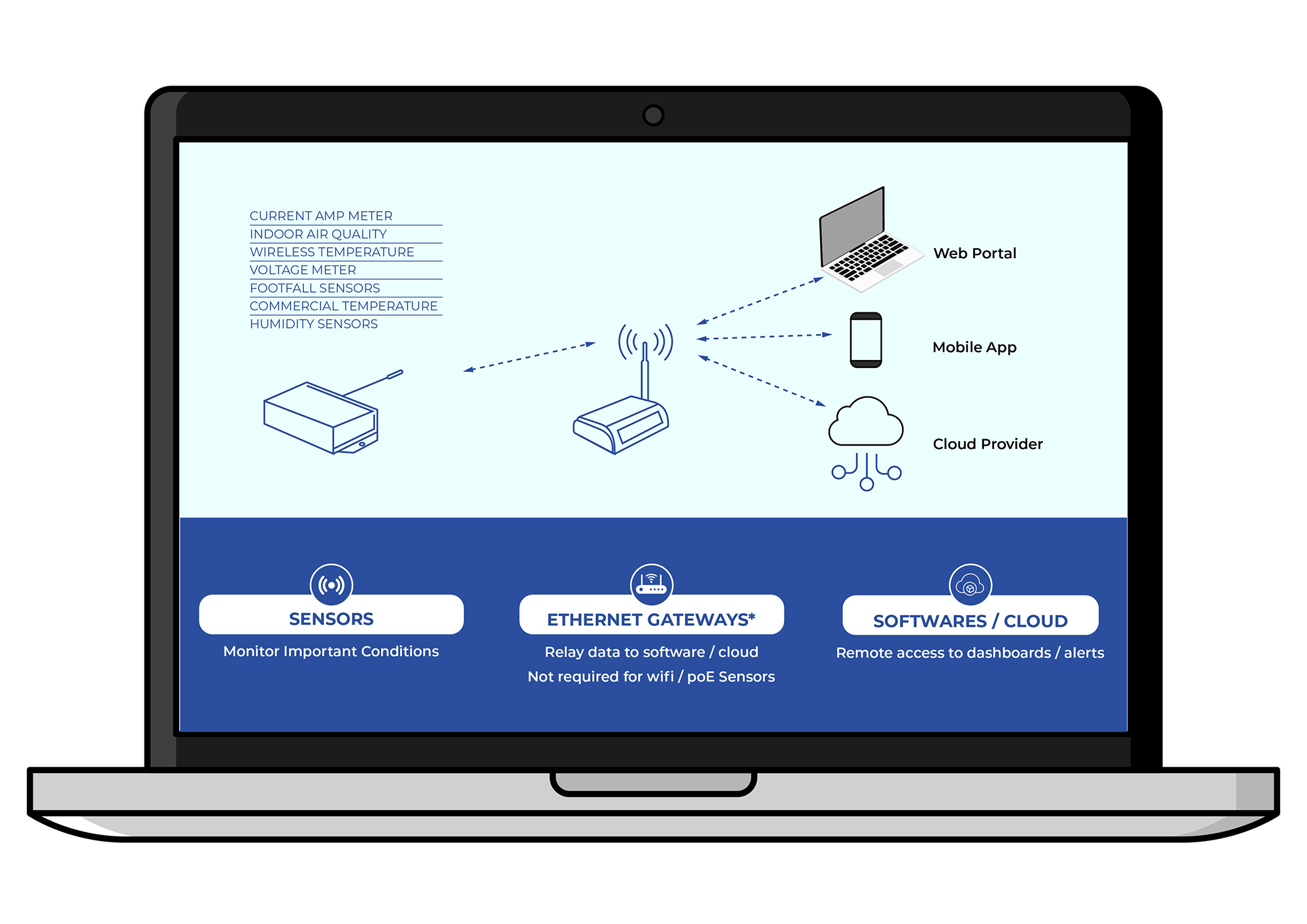IoT in Asset Management – what’s in it for you?
What is IoT Asset Management?
IoT is an advanced method for monitoring a company’s physical assets and information. The scope can vary, depending on the type of business operation, for example some companies may track building assets and equipment, while others might monitor tools or vehicles. The IoT-enabled version of tracking uses onsite sensors that allow tracking without human monitoring. There are many types of measurement, these include:
- Proximity
- Temperature
- Humidity
- Pressure
- Asset stress & performance
In short, by automating and analysing live data, IoT asset management helps organisations accurately monitor the status of their assets, thereby minimising human error, saving money and supporting sustainability.
How does it work?
IoT has many applications, though one of the most significant is its ability to make asset tracking more efficient. Data shows us that it’s possible to improve multiple industries through the IoT as demand for IoT devices increases.
The IoT system gathers information automatically and uploads it to a cloud server. It can then analyse the data it gets and provides insights for the company running it.
What are the advantages over traditional asset management?
Two notable IoT asset management features make the difference: automation and intelligence. An IoT system logs data automatically, whereas the more traditional method relies on humans inputting data into Excel sheets.
This can be a somewhat mundane task, that can also be prone to error, automation saves time and resources allowing technicians to attend to other more important duties.
Another benefit is that smart IoT systems use the data collected to provide invaluable insight. It can notify the company of measurements that are outside of predetermined parameters, such as higher-than-average temperatures, prompting action. Some devices even provide status updates.
IoT also provides numerous benefits, such as:
- Automated repair and maintenance
- Efficient safety and compliance checks through a self-sufficient system
- Efficient resource use
- A responsive system
- The ability to quickly analyze and determine possible opportunities for improvement
How can companies in different industry sectors benefit from IoT?
All industries that require consistent tracking of their assets will benefit from IoT, here’s just a few examples:
- Manufacturing: Companies can track the performance of their production assets as well as their general condition in real-time. This allows technicians to maximise every stage of production as well as monitoring maintenance requirements and schedules.
- Logistics: IoT asset tracking helps maintain the condition of sensitive items such as food and medicine. It can track delivery times, temperature, and other factors to maintain the manufacturers quality.
- Construction: IoT tracking can reduce instances of theft and ensures equipment is used sensibly and receives regular maintenance. The information it gathers can help resolve conflicts between developers and contractors and help to streamline onsite work schedules.
Want to learn more? Contact HITEK today.
HITEK is a home-grown brand, at the forefront of emerging technologies. Our in-house experts develop bespoke solutions, which can interface with existing BMS systems to create dedicated and reliable IoT-asset management systems. We have years of experience and our technical expertise, helps companies to reduce manpower costs, as well as improve efficiency and reliability.


